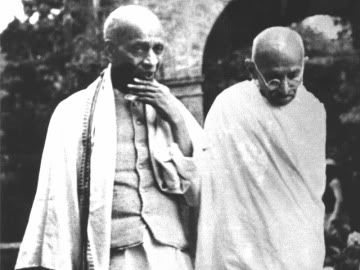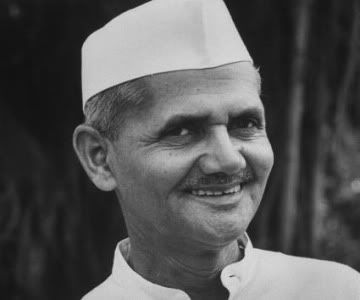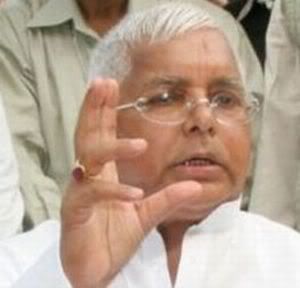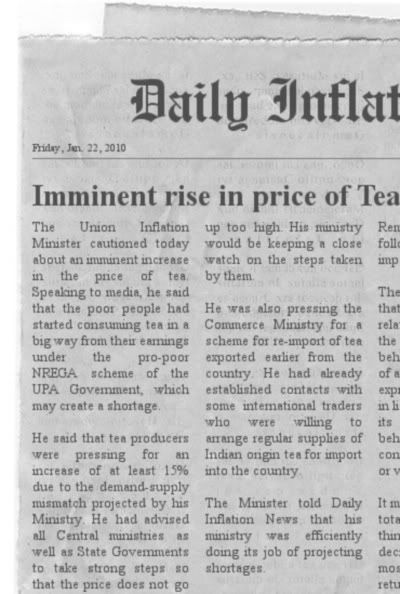The Bhopal Gas Leak Disaster – a catastrophe on 2nd/3rd December 1984 at the pesticide manufacturing plant of a monolithic US Multinational of that time, Union Carbide, which led to thousands of people losing their lives and getting injured due to leakage of toxic gas from a storage tank containing Methyl Isocyanate, has remained the worst industrial accident in the world. Over 25 years later and 18 years after the criminal trial in the case related to the catastrophe began, the lower Court in Bhopal pronounced judgment on 7th June 2010 convicting and sentencing 8 persons connected with Union Carbide India who were charged, to 2 years imprisonment, the maximum punishment for the charge for which they were being tried.

The events in Bhopal never received in the past the exhaustive investigation or media attention that they deserved. The judgment was the trigger for those who had practically forgotten the event to suddenly wake up and let out widespread cries of “justice denied”, “too little too late” etc.- amongst them the media, the general public, activists and even those in positions of authority. As the media recounted the disaster and the subsequent events, apart from those who have lived through the memories of the catastrophe, the impact also spread to those whose familiarity with the details was hazy. The impact was certainly compounded by the continuous discussions and interviews by TV media involving politicians, professionals, journalists, activists and others on this matter. The views of many participants with their own subjectivity, agenda and differing perceptions, often coupled with preconceived conclusions, half knowledge and predilections of presenters have tended to add confusion to a complex matter. The opportunity is also being taken by some to project views that deliberately cloud the real issues and divert attention away from inconvenient facts. In that they are ably helped by TV presenters who, appearing to ask tough questions, somehow never seem to ask the right tough questions. And expectedly, the TV channels have also been resorting to sensationalizing facts and conjectures. In the melee, objectivity is becoming the casualty.

Due to the overly active media exposure, the reactions of the parties involved and the general public have almost taken the form of frenzy. As a result of all that has been highlighted or exaggerated, the feelings of disbelief and frustration are leading to an outcry for “justice” and many appear to be ready to virtually hang every person who they think had even a small part to play in the event and it’s handling thereafter. Before logic, reason and objectivity completely fade away, it is necessary to place things in perspective, particularly the actual situation prevailing at that time and in the past all throughout till now. It is simply not correct to judge the events with today’s eyes because they took place in a different time line with a largely different set of conditions. It is also necessary to have at least a fair appreciation of the background of this very complex matter as to law and facts.
At the outset, it must be clear that the three parties who are squarely responsible for everything that has happened or not happened are Union Carbide, Government of India and Government of Madhya Pradesh. At the time of the accident, Rajiv Gandhi was the Prime Minister and Arjun Singh was the Chief Minister of Madhya Pradesh.
The anger, frustration and disappointment of the public mainly revolves around the following in specifics, resulting in the overall feeling of injustice: (1) Failure of the Governments at the Centre and State (2) Judicial Processes (3) Inadequacy of compensation (4) Distribution of Compensation (5) Relief & Rehabilitation and Long term medical issues (6) Remediation of land
Criminal Case – Trial Court
The immediate target of the people’s ire was the lower court judgment sentencing all the 8 accused to 2 years imprisonment. The ill-informed, misinformed and uninformed amongst the people feel that the court ought to have given a much higher punishment for the accident that caused thousands to lose lives and suffer injuries. But in a country which does not have kangaroo courts, the guilty can be punished only as per law. In the case related to the Bhopal disaster, all the 8 accused were tried primarily under Sec. 304A of the IPC (causing death by doing any rash or negligent act not amounting to culpable homicide) which offense carries a MAXIMUM punishment of 2 years and the judge could not have gone beyond the maximum under any circumstances. The Court has also given punishment of varying terms under some other Sections of the IPC which are to run concurrently. If all the punishments were to run separately, the total period would increase to 3 years and 9 months - far short of the “hanging” plea of those who clamor for “real justice”. In fact, those who were not directly connected with the plant operations and sitting at distant locations, including the non-executive chairman, have also been given the same punishment as those directly concerned at the site on the reasoning that they “ought to have known” about the situation at the plant level. As all have been found guilty and awarded the maximum punishment, there is little chance for the State to go in appeal except pleading for the sentences to run separately. On the other hand, the accused mainly the non-executive chairman and those not involved in plant operations may well appeal with a good chance of their punishment being reduced.
The other criticism leveled about the trial is the long delay of 18 years in reaching the decision. Actually, on 14th February 1989 the SC had approved the settlement reached between UCC and Govt. of India whereby apart from the monetary terms, even the criminal charges were to be dropped. However, on appeal, the SC on 3rd Oct. 1991 set aside the quashing of criminal charges. The original trial commenced in July 1992. When the charges were framed under Sec. 304 part II, the accused went in appeal to the High Court and thence to the SC. After the Supreme Court decision of Sept. 1996 (see below) the charges were re-framed and it is under the amended charges that the trial, during which 178 witness depositions were submitted by CBI concluded in April 2010. The judgment was delivered less than two months later. Anyone familiar with the inevitable time taken up by criminal trials of this nature and the immense normal work load of the courts would understand the delay. Therefore, it is indeed shocking that even the Minister for Law and JUSTICE Moily whose job is to ensure a proper justice delivery system and who ought to be aware of the reality, made uncalled for and irresponsible remarks saying that in this case justice delayed was not only justice denied but justice buried, to show fake sympathy!
The trial court had also framed charges against Warren Anderson Chairman of Union Carbide USA, the US Company and its Far Eastern subsidiary. As these were absconding, the trial was separated in the early stages. He was arrested in the first instance on 7th Dec. 1984 in Bhopal and was let off on the same day after granting him bail. (See below Anderson Affair and Congress in Denial) He never returned to face trial. The trial court had sought his extradition in 1992 but nothing was done till 2003 when Govt. of India sought extradition from the US Govt. only to be denied in July 2004. In fairness, it must be said that considering the charges against Anderson and in the context of the Extradition Treaty with the US, the legal experts consulted by the Govt. both in US and India had already indicated earlier, the possibility of rejection.
Criminal Case - Supreme Court
When the 8 accused filed revision appeals in the High Court against the charges framed by the trial court they were turned down but on appeal, a two member Bench of the Supreme Court by its judgment on 13th Sept. 1996, concluded that prima facie no charges could be framed under Sec. 304 part II but it was possible to apply Sec. 304A and directed the trial court to frame charges accordingly. Charges under Sec. 304A carry a maximum sentence of 2 years compared to maximum 10 years under Sec. 304 second part. It is this judgment which has been assailed now by many. The judgment came after the matter was duly argued by both sides. If there was any doubt about the judgment, the government itself should have filed for a review, considering the sensitivity of the matter. This did not happen. Now 14 years later, the Minister for Law & JUSTICE Moily, a senior minister, has used rather intemperate and unbecoming language against the then Chief Justice Ahmadi holding him responsible for diluting the charges, only to detract from the failures of others. It was also futile of him to suggest that the charge was reduced to that of a road accident. But the charge is based on the existing law of the land at that time and even now. In blaming the SC, he is also cunningly trying to shift the blame on the UF Govt. because Congress was not in power then.
Civil Litigation – USA
Within days after the accident, many lawyers from the USA - the ambulance chasers – landed in Bhopal offering their services to the accident victims to fight their cases in the US Courts. As early as 7th Dec. 1984, the first lawsuit was filed in US Courts by American lawyers on behalf of thousands of victims. Thereafter 144 more cases were filed in various US courts, all of which were joined in a single complaint in June 1985 involving 200,000 claimants. In the meantime, by a special Act briefly “The Bhopal Act 1985” passed in March 1985 the Govt. of India secured the exclusive right as parent patriae to represent all claimants in India and elsewhere so that “the interests of victims of the disaster could be fully protected and that the claims for compensation were pursued speedily, effectively and to the best advantage of the claimants”. The Government filed the claims on behalf of all claimants in US Courts. By May 1986, in India nearly 487,000 claims had been filed with the Government under the special scheme formed for registration of claims etc. Union Carbide managed to bring the matter before a convenient Judge Keenan and took objection to trying the case in US on grounds of forum non conveniens pleading that on various grounds it was more convenient to try the cases in the country where the accident occurred. The matter was strongly argued by the Govt. of India as to why the US Corporation was the responsible party to be tried and for the litigation to be continued in US. The court accepted UCC arguments and dismissed the consolidated case on grounds of forum non conveniens subject to UCC submitting to the Indian Courts’ jurisdiction in the matter. This decision was affirmed by the Court of Appeals in January 1987, effectively closing the option of pursuing the litigation in the US for compensation for deaths and injury.
After the Settlement in India (See below), some individuals once again approached the US courts in October 1993 for compensation but were denied hearing on grounds of their not having any standing. Other suits were also filed in 2004 for damages for personal injuries from exposure to contaminated water and for remediation of the land and liability of UCC for activities in India. They were dismissed both in the district and appeals courts at various times by November 2006. As of now, one appeal (Janki Bai Sahu) is pending in the US Court related to liability of UCC for UCIL acts.
Civil Litigation – India
Once the case was dismissed by the US Courts, Government began pursuing the matter in the Indian courts on behalf of all affected persons for compensation. Earlier, it had filed a case for $ 3.3 billion in compensation in the US Court. Even this claim was considered to be low compared to the estimates then made by some independent legal experts of a settlement in excess of $ 5 billion. However, even the lawyers who had earlier filed the cases on behalf of the individuals were fearful that a claim which may potentially bankrupt the US Company would not serve the purposes of those affected to get early justice. When the case was continuing in the US Courts, UCC had made an offer for $350 million in compensation which was rightly rejected at that time by the Government. It pursued its original claim of $ 3.3 bn. in the Bhopal District Court. The district court, in order to afford immediate relief ordered an interim compensation of Rs. 350 crores which was reduced to Rs. 250 crores on appeal in the High Court by UCC. Both the sides appealed to the Supreme Court against the HC order. Eventually, a mutually agreed overall settlement for $ 470 million for the benefit of all victims in full settlement of all claims, rights and liabilities arising out of the disaster was reached between the Govt. and UCC and accepted and recorded by a five member bench of the Supreme Court on 14th and 15th Feb. 1989, with reasons provided in a further judgment on 4th May 1989. This judgment was challenged by means of review petitions filed by others and not the Govt., but supported by Govt. The settlement was upheld by the Supreme Court in its judgment dated 3rd Oct. 1991, except that the quashing of criminal charges was set aside. This brought finality to the matter of compensation arising from death and injuries related to the disaster.
Inadequacy of Compensation
For those who had suffered as a result of death of relatives or injuries to themselves, the most important grievance by far remains the inadequacy of compensation. Many of the activists, journalists and others have rather simplistically been telling the world that the per person compensation amounts to a paltry sum. But the real picture can be seen only by a detailed analysis of the entire matter, including the actual compensation decided for various categories of claimants. For understanding the background with more clarity, the SC judgment dated 3rd Oct. 1991 needs to be referred to, without which it is well-nigh impossible to clear the misunderstandings created due to distortions or ill-informed comments by media, the activists and even the political parties. This is more so, when the comments are being made at a point of time far removed from the disaster and its aftermath and without considering the facts and issues in an overall sense. The Bhopal leak case was heard till the judgment of 3rd Oct. 1991 by four different Constitution Benches of the SC.
In mass tort cases like the one related to the Bhopal disaster, the trials are bound to be protracted and urgent relief required would elude the affected parties for long periods of time. “It is interesting to note that there has been no final adjudication in a mass tort action anywhere” and the alternative option of settlement and compensation is resorted to. Common law tort recovery is especially inadequate to compensate victims of toxic exposure. Assessment of compensation in such matters follows an approximation by a rough and ready process as it is difficult to precisely reach a figure of just compensation. The court also considered that a substantial time had elapsed during which the sufferers were without relief. In the judgment, the Court noted:
“When the settlement was reached a group of social activists, the Press and even others claiming to be trustees of society came forward to question it. For some time what appeared to be a tirade was carried on by the media against the Court. Some people claiming to speak on behalf of the social Think Tank in meetings disparaged the Court. Some of the innocent victims were even brought into the Court premises to shout slogans at the apex institution. Some responsible citizens oblivious of their own role in the matter carried on mud-slinging.”
It was also a fact that the Indian assets of UCIL were only about Rs. 100 crores and it was necessary to look to the US Company for compensation. Any litigation based on merits would have carried on for another 8 to 10 years in the lower court and with appeal procedures, 20 years in all, with uncertain outcomes. The legal uncertainties involved in bringing such litigation to a logical conclusion to secure a completely “satisfactory” settlement are too well known. The Court had said:
“Those who have clamoured for a judgment on merit were perhaps not alive to this aspect of the matter. If they were and yet so clamoured, they are not true representatives of the cause of the victims, and if they are not, they were certainly misleading the poor victims.”
In its judgment dated 4th May 1989, the Court has also given some broad calculations based on data available at that time to prima facie indicate that the compensation would be reasonable at that point of time. Subsequently, the government also fixed the compensation amounts for various categories of the victims.
In typical settlement agreements, the corporation agrees to pay an amount that is most often much less than the actual damage. The amount of $ 470 million was arrived at after negotiations between the parties, much lower than the original $ 3.3 billion claimed. There have been suggestions of some inappropriate dealings. There is nothing concrete to suggest that such was the case but it cannot be ruled out. Whatever may have been the real reason, the Rajiv Gandhi government buckled under tremendous pressure. In view of some US experts, even at a $ 1 billion settlement, UCC would not have been worried. At the end of the day, a settlement always depends upon the relative negotiating strength, tactics and urgency of either side, and it is obvious that acting under immense pressure, the Govt. finally yielded to a figure which appears low. The apparent inadequacy of the amount is further heightened by the fact that whereas the settlement was done considering the number of claims at that time and the assumed new claims, as time passed, a far larger number of claims materialized. At one time, the parties approaching the court of stated of their own admission that the numbers in case of ‘death’ as also ‘injury’ were at least five times larger than what was assumed at the time settlement had been reached. It is obvious that no settlement would have been possible on hypothetical number of possible future claims.
It is, therefore, clear that the compensation amount was lower than would have been desirable in the first instance and in the light of actual claims received has turned out to be inadequate. However, this cannot be attributed or blamed on the judicial process. Whether or not the case should not have been allowed to continue to its logical end shall always remain a question without a clear answer but the call for that was that of the Government acting on behalf of the victims.
Distribution of CompensationA lot of dissatisfaction of many of the victims and in particular the activists centers on the non settlement of the claims. In light of the expectations of a high number of claimants, a special scheme to be managed by a separate authority was formed in 1985 under a special Act soon after the accident. (
see here)
The sheer scale of the after effects of the tragedy can be imagined from the data submitted by the concerned authority which had, till 31st Oct. 1990 received 639,793 claims. Stories abound of thousands of false and vexatious claims, even some by persons in high positions, - one of them related to politicians in the party in power who had fled to a safer place during the accident. In its Review Judgment of 3rd Oct. 1991, the SC noted:
“The Additional Director also refers to the attempts by unscrupulous persons to exploit the situation in pursuit of unjust gains and how the authorities had to encounter attempts of impersonation and ‘attempts by claimants to pass of other's urine as their own.’ It was said that there were urine-donors.” Even today, there are social activists claiming that over 93% of the victims had not received a single rupee. Such wild assertions need to be trashed straightaway considering that the total population of Bhopal at the time was 894,000 and the gas affected areas had a population of 560,000. (
see here) According to the Ministry of Petroleum & Chemicals Annual Report 2009-2010, as on 30.11.2009, claims amounting to Rs. 1549.07 were disbursed to 573,894 claimants. (
see here)
At the same time, there have also been continuing allegations of delays in payment of compensation. That long delays occurred cannot be denied. The original amount of compensation was deposited by UCC in February 1989. On various claimants approaching the SC in 2004, the SC passed orders in July 2004 for disbursements of settlement funds remaining to be disbursed. Subsequently, the deadline for disbursals was again extended till 30.4.2006 by SC. Social activists have been pointing out to the disbursement delays and sadly, the facts support their contentions. No fully satisfactory explanation for the delays is known to the public as yet. Unfortunately, the entire disbursal process seems to have been handled in a non-transparent manner and it is not known as to how much balance still remains with the Government.
It must also be remembered that the entire compensation settlement process has been a Herculean exercise (total 1.03 million claims registered) as each claim needs to be verified and decided. Thousands of cases may have been decided in adjudication proceedings which in their very nature are time consuming. It is interesting that 15,342 cases registered under “death” category were awarded of which only 5,295 were proved death cases during adjudication.
Relief & Rehabilitation and Long Term Medical IssuesThe massive task of R&R for the victims of the tragedy was taken up by the M.P. State Govt. which created a special department for the work, involving medical, economic, social and environmental rehabilitation and judicial and administrative work. (
see here) Over time, voluntary agencies also participated significantly in the effort. An amount of Rs. 512 crores had been spent on these measures till March 2009. Nevertheless, the R&R effort does have shortcomings and inadequacies and this work should form a core of the actions to be taken. In particular, the long term medical issues may need to be taken care of for at least ten more years.
Clean up and RemediationThe cleaning up and remediation of land remains a major issue over which in the 25 years, virtually no attention in terms of real action has been given by the Government. The land which was within the property of the Bhopal plant has been found to have contamination levels 500 times higher than those permitted by WHO. Major issues of soil and drinking water contamination have also arisen causing immense problems relating to future health of the people. The Government had at one point in time abandoned the idea of complete remediation after estimating a cost of Rs. 100 crores, considered to be high.
The issue has been entangled in a legal mess as to the real responsibility for cleaning up the land. The land was given under a lease by the M.P. Govt. to Union Carbide. In 1998, inexplicably the State Government allowed Union Carbide to hand back the leased land without any clean up. (
See here)
The neglect of this important aspect reflects a tale of total apathy and lack of focus on the part of the Government as it tries to fix the responsibility for the clean up on Dow Chemicals, successors to Union Carbide while Dow tries to disown responsibility. Although a legal case has been filed by the Government in the M.P. High Court against Dow, what is needed is the actual action on clean up and remediation. A case has also been filed by Janki Bai Sahu in the US which has been meandering through the legal maze there.
सारे जहाँ से अच्छा, हिंदोस्ताँ हमारा
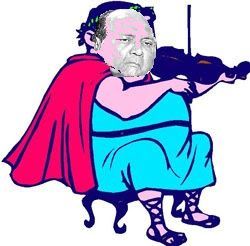
 A Reason to mislead?
A Reason to mislead?
 Failure, not a worry
Failure, not a worry This bird is the Great Indian Bustard - spelt with a U not A
This bird is the Great Indian Bustard - spelt with a U not A



 M.Sc.
M.Sc.











